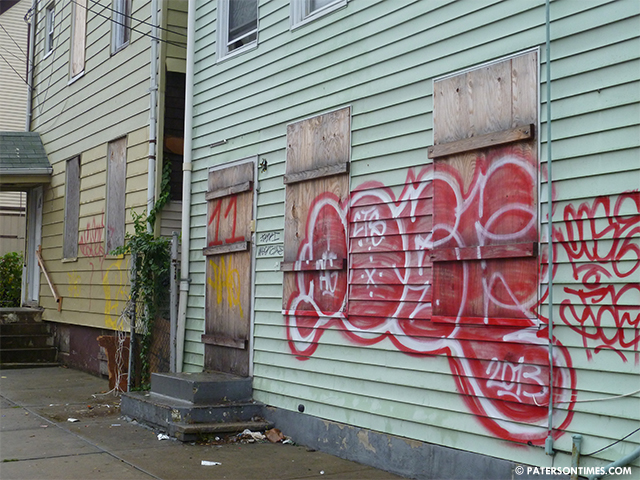The nine-member city council unanimously adopted the mayor’s neighborhood stabilization program ordinance during its regular meeting on Tuesday evening.
With over 1,200 abandoned properties scattered throughout the city – in some neighborhoods entire blocks are dotted with boarded up homes – officials are seeking to go after neglectful property owners through summary court proceedings.
The ordinance takes the city’s abandoned properties list to its next step. Whereas, the abandoned properties list, instituted by Andre Sayegh, 6th Ward councilman, allowed the city to keep track vacant properties, the new ordinance will allow officials to utilize the list against landlords, who allow their properties to degrade and destabilize neighborhoods.
“We’re looking, at this point in time, to identify those properties that are on the list, and to ensure that these properties are repaired, and no longer become a blight on the city,” explained Kenneth Morris, councilman at-large.
If the owners do not come forward to repair, the city will now have the power to take over the properties through eminent domain, said Morris.
“It’s been a safety issue in our community,” said Domingo “Alex” Mendez, councilman at-large. “Either they fix it or we’ll take it away.”
However, that take over process will not be as easy as officials assume based on the language of the ordinance. The city will have to file a complaint for summary proceeding in the state court to compel the uncooperative owner into submitting a rehabilitation plan for the property.
The ordinance also requires the owner to bond 125-percent of rehabilitation cost, a surety bond to guarantee the property will be developed. As the owner pursues rehabilitation of the property, he must provide the city quarterly reports of progress being made.
If work halts and progress stops, the city will take over the property and use the bond via a designated agency to do the repair works, according to the ordinance. The city can also sell the properties to developers, community development organizations, and others who have the financial power to purchase and undertake rehabilitation work.
Purchasing one of these properties will require deep pockets, large sums of money that Patersonians with an average household income of $33,500, can hardly afford. “Individuals should be allowed to take some of these properties,” said Ruby Cotton, 4th Ward councilwoman. “I want individuals like you and me to buy them.”
Morris said anybody can purchase the properties once they are up for sale. “It’s not just for developers,” said Morris. “But, individuals must demonstrate they have the money to rehab the home.”
Community activists expressed their concerns about a process that favors the moneyed interest leaving poor city residents out of the abandoned properties purchasing game. “The city should come up with a fund to help residents purchase these properties,” said Jesus Castro, head of the Hispanic Council. If residents are left out of the process, said Castro, the current population will soon be priced out of town. “You don’t want banks and developers to price out community residents,” said Castro.
“Open it up for city residents for the first 30-days before allowing outsiders to take over,” added Doc Davis, a city resident.
“Let some of these properties be owned by first time home buyers,” stated Ernest Rucker, community activist. “Let’s at least think about the public that live here.”
Richard Bennett of Boxwood Realty, who owns properties for a company in the 4th Ward, said the city can selectively set aside decent properties, those built more recently, for city residents. “Be selective about who gets what,” said Bennett. Properties built after 1980 can be taken over by residents, stated Bennett.
Bennett said properties built prior to the 1980s have large number of issues like lead paint and fire code problems that will require a great deal of money to address; however, those built after 1980s are decent and will not require excess amount of funds to rehabilitate.
“I don’t think I can purchase one of these properties and spend $50,000 on it,” said Julio Tavarez, 5th Ward councilman and council president.
Another concern council members expressed was a fear that a single well-heeled buyer or company would buy up large number of the properties to merely hold them rather than repair and rehabilitated them. “There are some developers who stock pile on properties,” said Cotton. “I have developers who had properties for 5-10 years and done nothing.”
Mohammed Akhtaruzzaman, 2nd Ward councilman, asked whether the city can add a clause into the ordinance that will bar affluent buyers from monopolizing.
“You certainly do not want to tell them you cannot buy it, if they are the highest bidder,” responded law department director Domenick Stampone. The director said the purpose of the ordinance is to bring an infusion of cash into the city. By adding a quota for buyers might defeat the purpose, alluded Stampone.
Morris said it hardly matters who takes over the property, for the ordinance has safeguards that will ensure the properties are no longer an eyesore and haven for crime in their respective neighborhoods. “If there’s no action in these properties within six months, the city will take them over,” said Morris.
“We don’t want any of these neighborhoods to invite blight,” added Sayegh.
Morris said the rehabilitation of these properties will create jobs in the city. “We’re going to turn this city around block by block, neighborhood by neighborhood,” said Morris.
